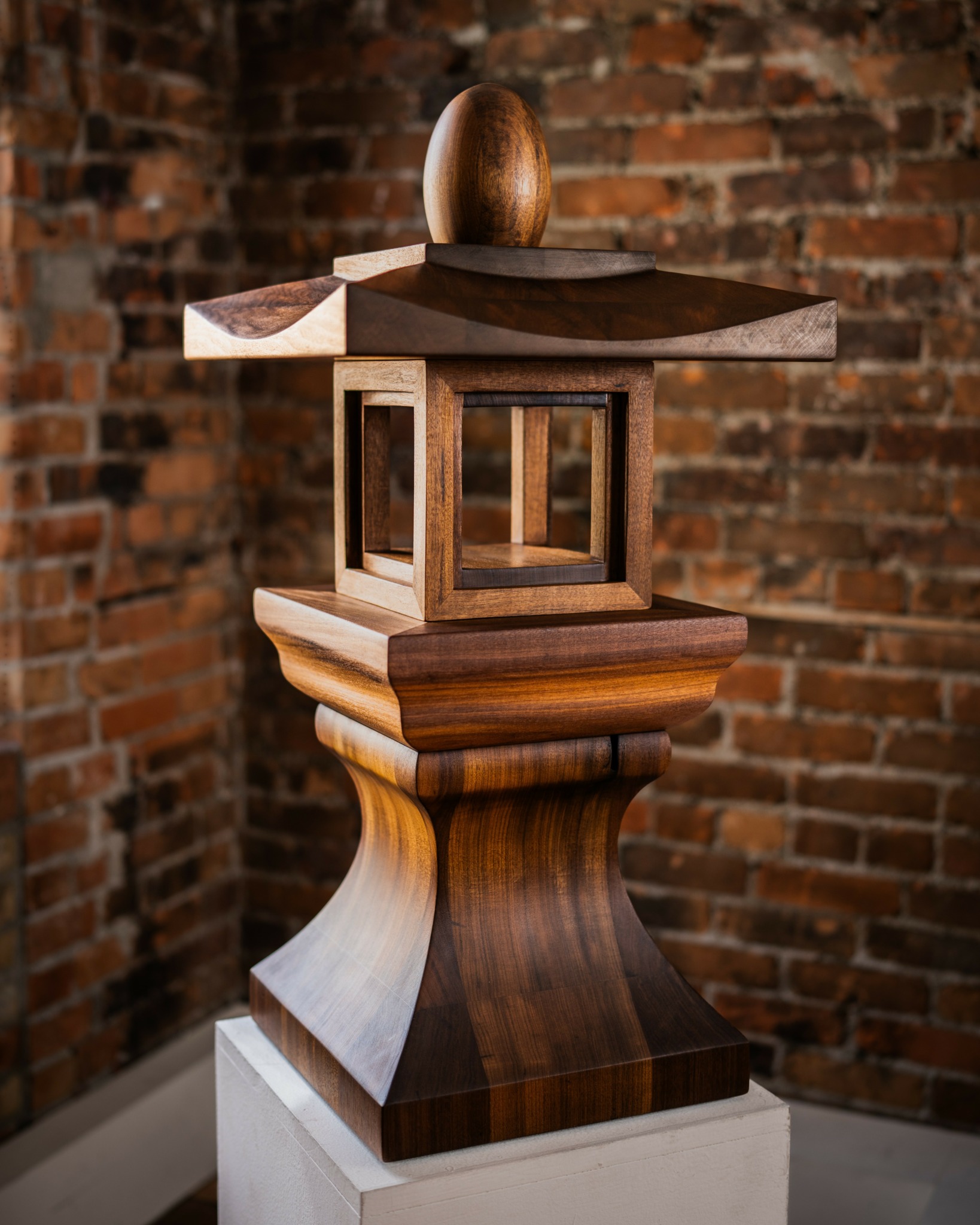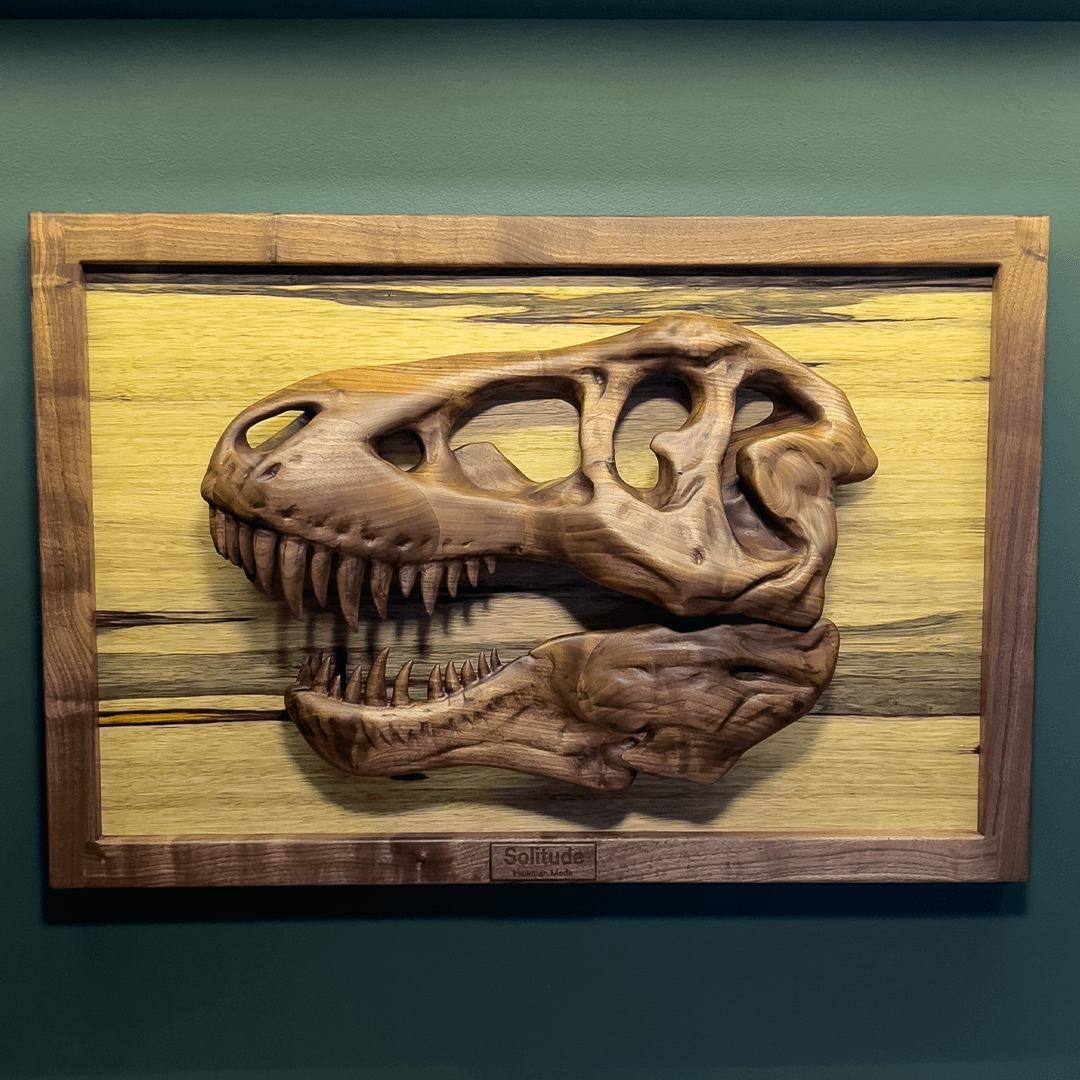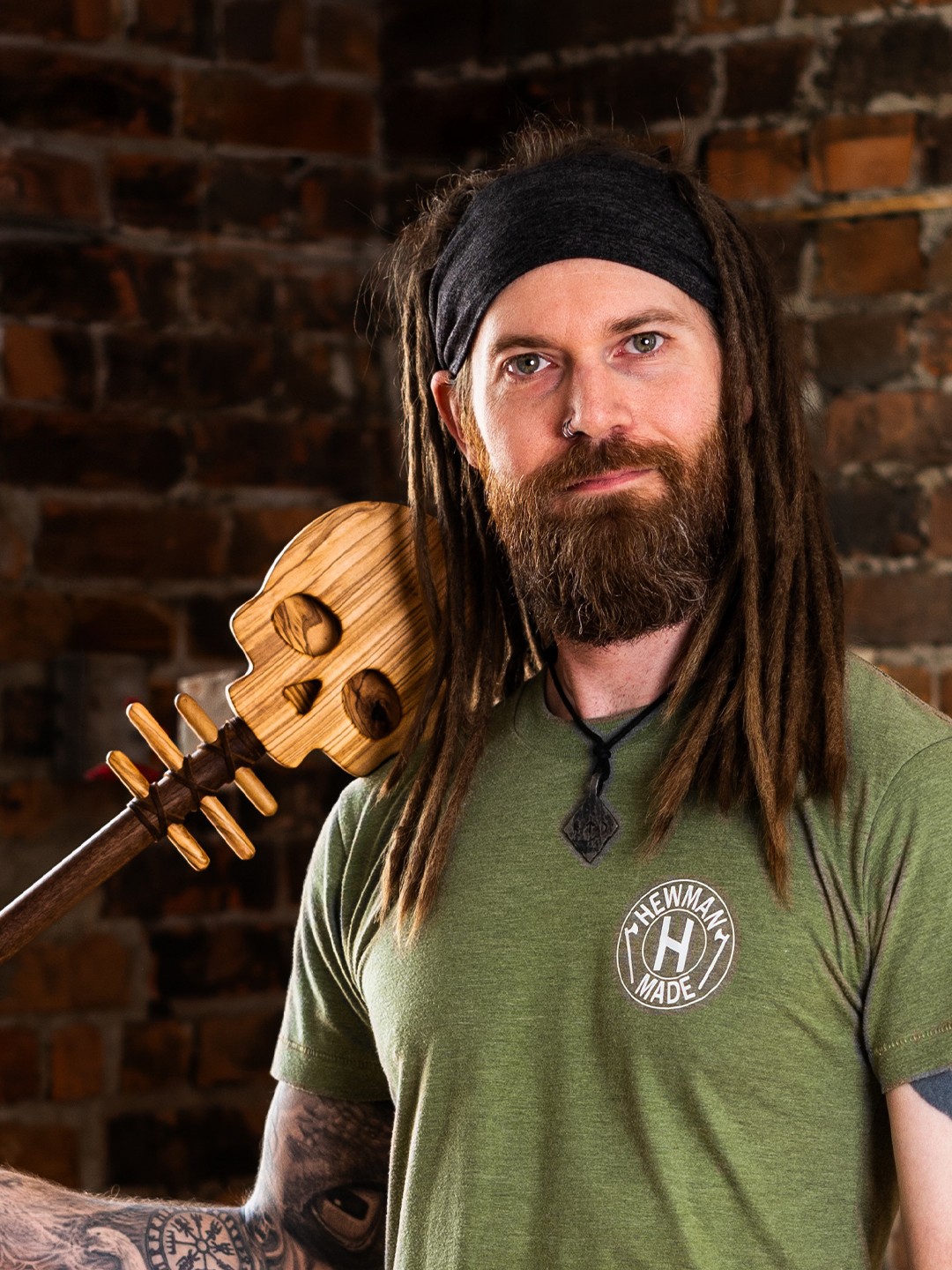We caught up with the brilliant and insightful Hew Jonsson a few weeks ago and have shared our conversation below.
Hew, appreciate you joining us today. How did you learn to do what you do? Knowing what you know now, what could you have done to speed up your learning process? What skills do you think were most essential? What obstacles stood in the way of learning more?
My introduction to woodworking came in Junior High school. My school had a small shop and we got a nice introduction to hand tools and working with multiple different mediums (wood, plastic, leather, metal etc.). When I got to High School we had a full woodshop and that’s where I was able to learn how to use power tools, table saws, lathes, and start to learn design and joinery. Over the next 20 years woodworking was always a hobby. I’d make tables for my house, artwork as gifts for friends and even a functional NES controller that was the size of a coffee table. Back then YouTube was in it’s infancy and there wasn’t a lot of places I knew of to be taught new skills or techniques. This meant that I was forced to create my own plan of attack and just try. A lot of times this led to mistakes being made, failed projects and needing to change my design or approach. As frustrating as this was at the time, it’s turned out to be the best thing that could have happened, because it’s forced me to problem solve my own solutions and not rely on someone else’s method. Even if doing it another way is MUCH easier!
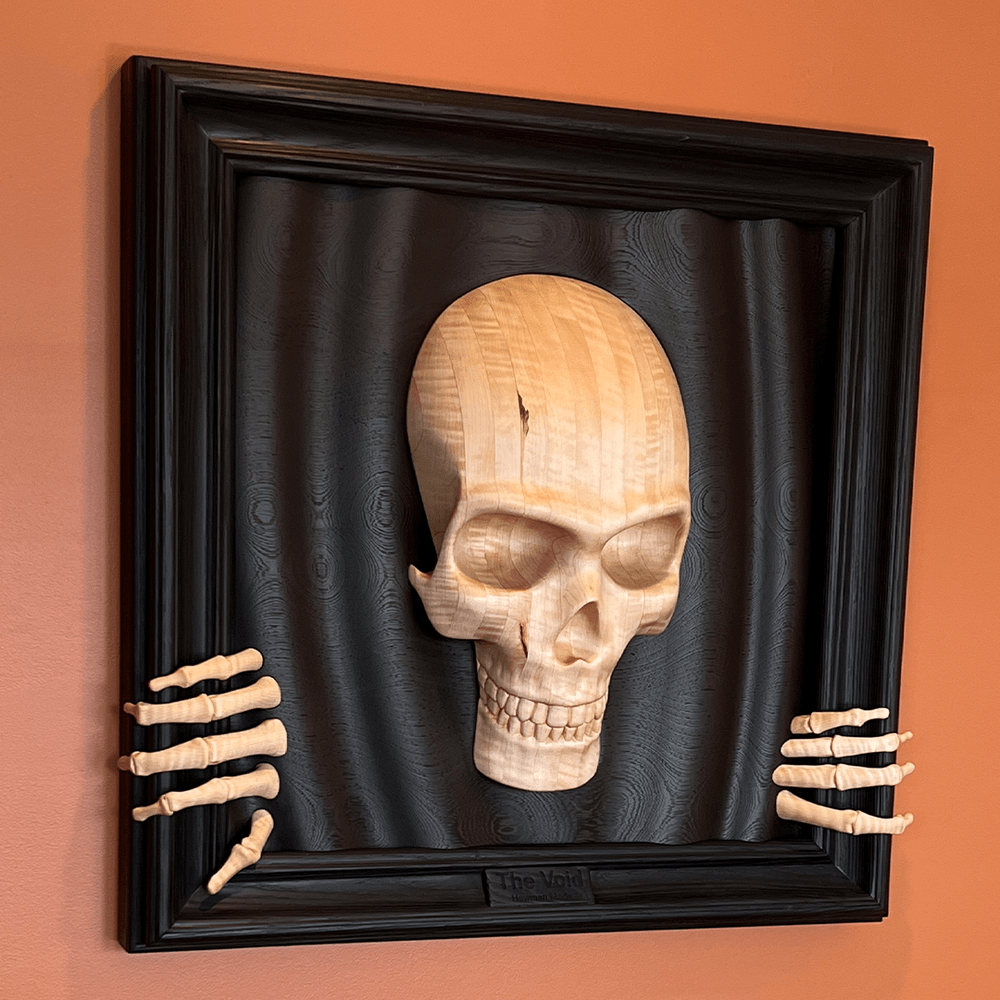
Hew, before we move on to more of these sorts of questions, can you take some time to bring our readers up to speed on you and what you do?
Absolutely! My name is Hew and I’m a born and raised Calgarian. I cut my first piece of wood back in junior high school in ’97 and for the next 25 years woodworking was always a hobby and a way to unwind after a long week at work. Around 2010 I decided I wanted to learn about leatherwork and the first project I decided to make was a leather jacket, because…why not? I’d never sewed before, never worked with leather before, so how hard could it be to make a jacket, right?
As much as I enjoy leatherwork, woodworking has always been front and centre. It started as a hobby and one that I spent more and more time doing as I was getting more stressed and depressed from working my corporate IT job. There came a time around 2021 where the only time I felt happy was when I was making something in my shop, it was a pretty dark place. During that time I was in charge of procuring and supplying the entire company with laptops, cell phones and any other technology needed to enable everyone to leave the office and work from home. Needless to say, I was not happy at work, and anyone working in IT throughout the pandemic could agree that it was extremely stressful and quite thankless. Fast forward to January 2022 to what I thought was a normal Thursday, however I was wrong. The moment I walked into the office I was ushered into a meeting room where my Director and a member of HR told me I was being released and a few minutes later I was escorted out of the building. I learned a big lesson that day, and that was, no matter how much of your blood, sweat, tears and life you give to a corporation, you’ll always just be a number to them and replaceable at the drop of a hat. So why should I try and find another soul-sucking company to work for when I could bet on myself instead.
And that’s what I did. The very next day I went 100% into making Hewman Made my livelihood. Luckily for me, I’d spent the prior 6 months setting up a website, I’d started a YouTube channel and I was working on growing my social media following and letting people see the products I had to offer.
Now the thing I’ve learned about myself the most over the last few years of running my business is, I’m really not a “traditional” woodworker. Yes, I can make a cutting board, I can make coasters and serving boards, tables and small furniture. And I do enjoy making those things, but they aren’t what makes me really excited. My passion for woodworking is more based in 3D art and sculpture. Finding ways to combine function and aesthetics in ways that aren’t typically done with wood. Recently I made a batch of Mushroom Lamps that have received a lot of attention. I also have a love for skulls and anything Halloween related, which inspired me to make the piece I’m most proud of at the moment, ‘The Void’, which is a 20″ tall human skull and skeleton hands emerging from a rippled backer and peering into your living space. Most recently I completed a T-Rex skeleton head that I call ‘Solitude’, which is another large 3D wall sculpture that would be the centerpiece of any room.
I think the things that set me apart from other woodworkers would be the size and scope of the projects I take on, usually with only half a plan on how I’m going to pull it off. The compliment I hear the most from my clients and people who see my creations is ‘Beautiful Work!’ which I can only take partial credit for. And that’s because the wood I use is always naturally finished, which means I don’t use dyes or stains to achieve the colors and character in my pieces. Just really pretty wood from around the world that has the beauty to speak for itself.

Is there something you think non-creatives will struggle to understand about your journey as a creative?
Pricing is always the most difficult thing. The sheer amount of time, trial and error, wasted materials and design iterations it takes to come up with a final product or finished art piece is exponentially larger than most people think. It’s really easy to walk by someone’s work at a market, in a gallery or to see a video on social media and make a judgement on it’s value. Most people have no knowledge or understanding of how many days and hours it took to complete that piece. I truly believe the artist should be compensated for every hour they spend, just like someone is compensated when working a 9-5 job. The unfortunate thing is an artists true value is rarely understood or appreciated because there’s a lack of knowledge and understanding of the time and effort that’s required to make something by hand. Especially in a world that’s filled with fast fashion, cheap overseas imports and AI counterfeits.
As an example, a few years ago I designed and started making 2″x4″x1.5″ wooden blocks that fit together and have a minor resemblance to a popular Danish building brick. When I put out a video of me building a small structure with these bricks there was an overwhelming reaction to “How Expensive” they were. I’d say almost half the comments were people complaining about me selling one brick for $40 Canadian. This prompted me to make a follow up video fully explaining the time, materials, tool costs and everything that goes into making this product. At the end of the day, I’m only making appx $15/hr on that product, which in Alberta is the current minimum wage.
Weighing the price vs. time for your products is an extremely difficult thing as a creative. There’s a perceived value that most people will have in their head when it comes to physical products. A $10 cup of coffee from a global multi-billion dollar chain, you don’t blink an eye. But $40 for a set of exotic wood coasters that will last the rest of your life? “That’s far too expensive”, even though the maker is probably only making $10-15/set before taxes.
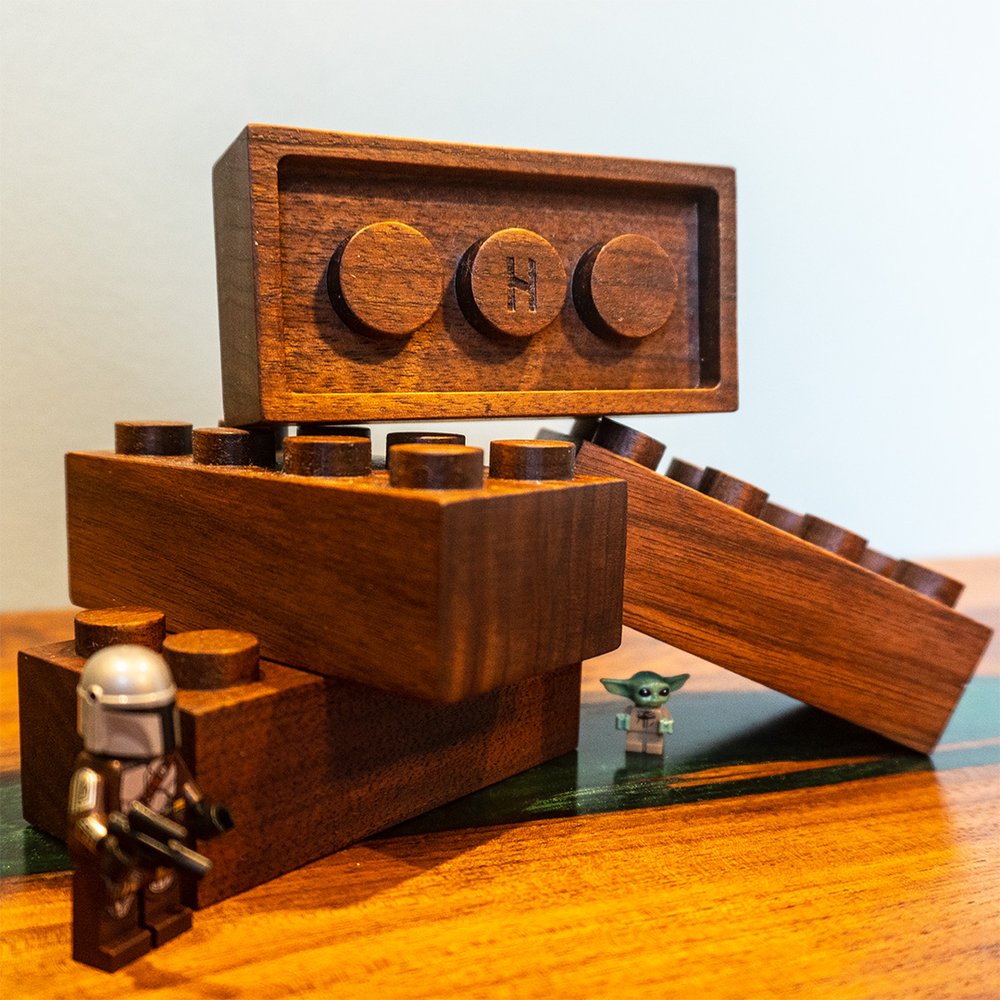
We’d love to hear the story of how you built up your social media audience?
My social media following has been an interesting ride and one I don’t overly wish on anyone. I wasn’t on any social media before 2019, I actually didn’t even really know what Instagram was before then. Once I was introduced to it I spent about 3-4 months just looking at pictures and then decided to post a few shots of my work. To my amazement, people seemed interested. Over the next few years I would casually post different projects and I started to build a nice little base of amazing and supportive people.
As “luck” would have it, around the same time I was fired from my corporate job and decided to be a full time woodworker and creator I had a video go viral. I’d made a couple of secret doors in my house as a personal project and when the dust settled that video had 11.7 million views on IG alone and I went from 1000 followers to 72,000 followers in about a months time.
Now this sounds like an amazing thing, and it was at first. It brought attention to my work and my business, I had people reaching out about commissions, I had brands wanting to work with me and it gave me a big confidence boost that I could make this all work.
Fast forward 3 years and I can see first hand that going viral, and going viral to that scale was a huge detriment to my business. The unfortunate truth of going viral is, your account will be filled with followers that were only interested in that one video. You’ll have an international audience that may never be able to purchase your products. And worst of all there will be a huge number of bot, scam and fake accounts that you’ll never be able to get rid of. All of these things will hurt your overall engagement and a lot of the time the people who actually will support you and want to see your work won’t be shown based on the current algorithms.
As amazing as it sounds to ‘go viral’ and have that huge hit of dopamine from your work taking over the internet, I’d much rather have 1000 local supporters who’ll come to an exhibit, see my work in person and truly support me. I think that’s much better than having 100K online followers doom scrolling by my art.
Remember, the number of followers you have is not the same as the number of supporters you have. Supporters will always be better.
Contact Info:
- Website: https://hewmanmade.ca
- Instagram: @Hewmanmade
- Youtube: https://www.youtube.com/@HewmanMade
